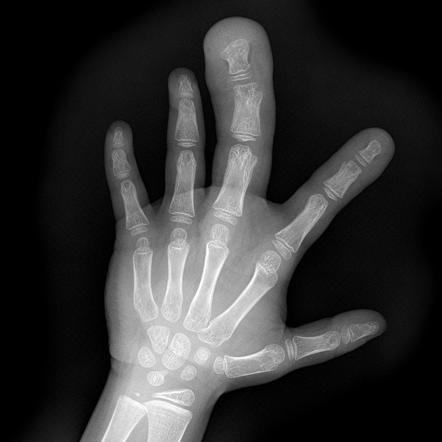Gigantism
Content of This Page
1- Introduction
2- Causes
3- Symptoms
4- Difference Between Gigantism And Acromegaly
5- Treatment
Introduction
Gigantism is a rare condition characterized by excessive growth and height due to an overproduction of growth hormone, usually caused by a benign tumor of the pituitary gland called an adenoma. This excess growth hormone leads to abnormal bone and tissue growth in children and adolescents whose growth plates have not yet closed.

Causes
Pituitary Adenoma: The most common cause, a benign tumor in the pituitary gland produces excess growth hormone, leading to accelerated growth and height.
Genetic Conditions: Rare genetic disorders, such as multiple endocrine neoplasia type 1 (MEN1), can increase the risk of developing pituitary tumors and gigantism.
Hypothalamic Disorders: Tumors or conditions affecting the hypothalamus, which regulates the pituitary gland, can also lead to excessive growth hormone production.
Other Tumors: In rare cases, tumors in other parts of the body can secrete growth hormone-releasing factors, indirectly causing gigantism.
Inherited Genetic Mutations: Some cases of gigantism are linked to inherited genetic mutations that affect growth hormone regulation.
Symptoms
Excessive Growth: Rapid and abnormal increase in height and overall body size, particularly in children and adolescents whose growth plates have not yet closed.
Enlarged Hands and Feet: Noticeable increase in the size of hands and feet, often leading to difficulties in fitting into shoes or gloves.
Prominent Facial Features: Enlarged facial features, including a protruding jaw, enlarged nose, and thicker lips.
Joint Pain: Discomfort or pain in the joints due to abnormal growth and increased stress on the joints.
Thickened Skin: Skin may become thickened or coarse.
Headaches: Persistent headaches caused by the pressure of the growing tumor on surrounding brain structures.
Vision Problems: Vision changes or loss due to the pressure of the pituitary tumor on the optic nerves.
Excessive Sweating: Increased sweating, often related to hormonal changes.
Enlarged Organs: In some cases, internal organs may become enlarged.
Delayed Puberty: In children, delayed or abnormal development during puberty.

Difference Between Gigantism And Acromegaly
-Gigantism:
- Age of Onset: Occurs in children and adolescents whose growth plates have not yet closed.
- Symptoms:
- Excessive Growth: Rapid and abnormal increase in height due to the growth plates still being open.
- Enlarged Hands and Feet: Increased size of hands and feet.
- Prominent Facial Features: Less prominent compared to acromegaly, but can still include some changes.
- Effect on Growth: Results in increased overall body size and height as the bones continue to grow.
-Acromegaly:
- Age of Onset: Develops in adults, typically after the growth plates have closed.
- Symptoms:
- Enlarged Extremities: Enlarged hands, feet, and facial features such as a protruding jaw and enlarged nose.
- Thickened Skin: Coarse, thickened skin.
- Joint Pain: Pain and discomfort in the joints.
- Organ Enlargement: Potential enlargement of internal organs.
- Effect on Growth: Does not increase height but leads to abnormal enlargement of body parts and organs due to excess growth hormone.
-Summary:
- Gigantism affects height and overall growth in children and adolescents.
- Acromegaly affects the size of hands, feet, and facial features in adults, without impacting height.
Treatment
1. Surgery:
- Pituitary Tumor Removal: The primary treatment for both conditions is surgical removal of the pituitary adenoma causing the excess growth hormone production. This is often done through a transsphenoidal approach (accessing the tumor through the nasal cavity).
2. Medications:
- Somatostatin Analogs: Medications like octreotide and lanreotide reduce growth hormone secretion by mimicking somatostatin, a hormone that inhibits growth hormone release.
- Growth Hormone Receptor Antagonists: Drugs like pegvisomant block the action of growth hormone at its receptor, reducing the effects of excess hormone.
- Dopamine Agonists: Medications such as cabergoline or bromocriptine can lower growth hormone levels, particularly if the tumor also produces prolactin.
3. Radiation Therapy:
- External Beam Radiation: Used if surgery is not feasible or if the tumor persists after surgery. Radiation helps shrink the tumor and reduce hormone production.
- Stereotactic Radiosurgery: A form of targeted radiation therapy that delivers a high dose of radiation to the tumor while minimizing damage to surrounding tissues.
4. Hormone Replacement Therapy:
- Post-Treatment: After tumor removal or other treatments, patients may need hormone replacement therapy if the pituitary gland’s ability to produce hormones is affected.
5. Ongoing Monitoring:
- Regular Check-Ups: Continuous monitoring of hormone levels, imaging studies (like MRI), and symptom assessment are essential to ensure that the treatment is effective and to adjust therapy as needed.
6. Lifestyle and Supportive Care:
- Symptom Management: Managing symptoms such as joint pain, skin changes, or other physical issues with supportive treatments and physical therapy.
- Patient Education: Educating patients about the condition, treatment options, and potential side effects helps in effective management and adherence to the treatment plan.